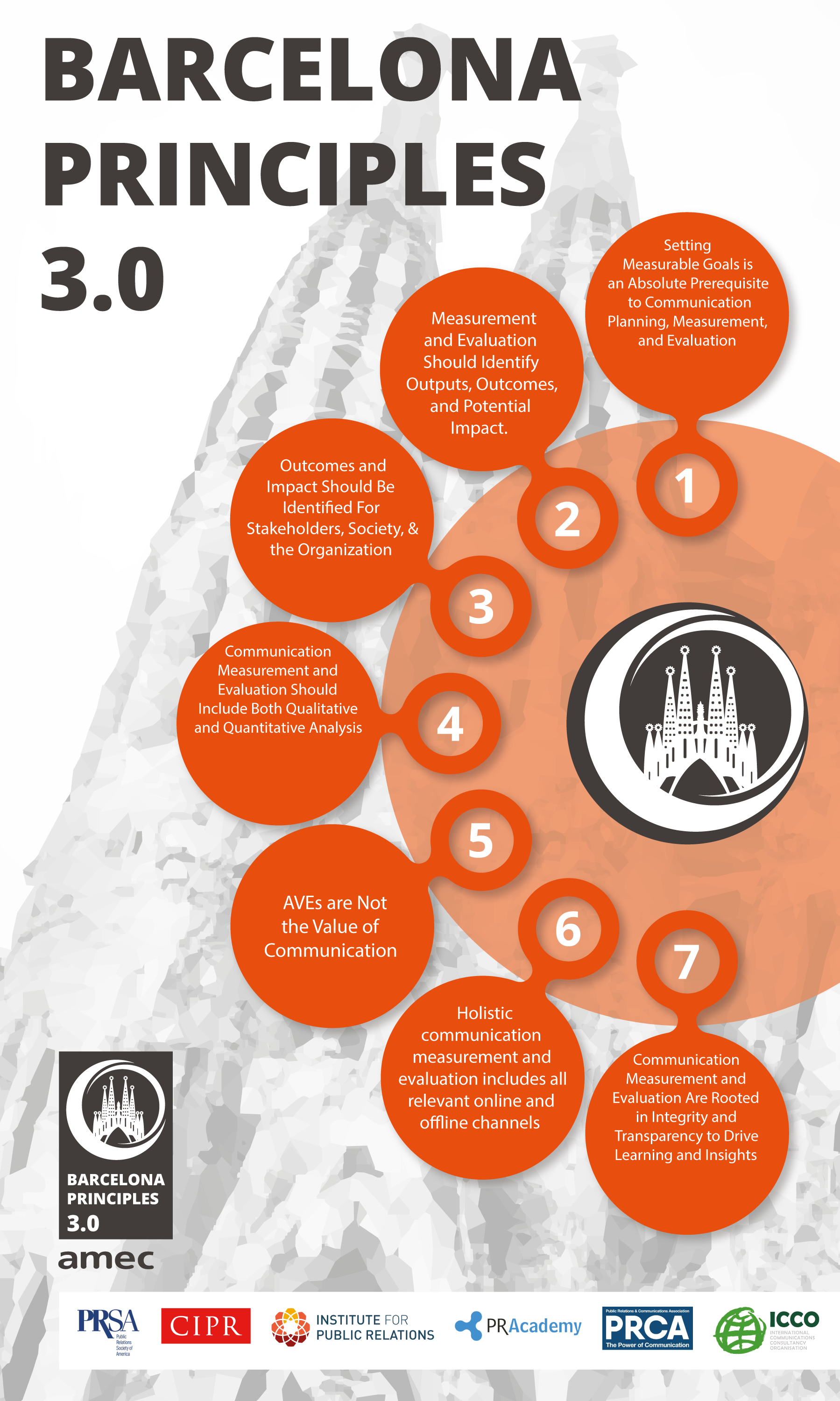Demonstrating PR impact: Where to begin?
‘How do you measure the success of PR?’ is a question that is consistently bandied about, usually near the end of the month when a report is due…
The truth is, there are many ways. It’s not that you can’t demonstrate success, but that there is no definitive rule book. Often, it can be down to interpretation.
However, we don’t like leaving anything to interpretation. We like cold, hard, facts, backed up by definitive insight. Which is why we’d like to run through our core guiding principles and then highlight three main, simple, ways we can measure the success of PR.
Measurement principles
According to the International Association for the Measurement and Evaluation of Communication – or AMEC – and its Barcelona Principles 3.0, there are seven key targets to live by when measuring the power of communications.
These guidelines include setting measurable goals being an absolute prerequisite to the planning of communications. As is the outcome being identified for stakeholders, society and the organisation, plus the evaluation identifying outputs and potential impact. Advertising value equivalency (AVE) is not a clear indicator of success and should be excluded.
We use the Barcelona Principles 3.0 as the bedrocks of Tyto’s PR measurement, reporting and insights.
With this in mind, we like to create a completely customised outlook for a campaign and use granular metrics unique to each business. Below are three key metrics that we use as a baseline to measure success in PR on a basic level, including examples, targets and outcomes. Hopefully, by reading this blog, you can gain more from your businesses communications reporting by using these simple pointers as a starting point.
Share of Voice
What is Share of Voice?
Share of Voice, or SOV, is an indicator of relative public relations success. It provides a quick-reference percentage that highlights the number of times a brand, product, terms or a person’s name is mentioned across media outlets when compared to the number of times a rival or competitor title is also mentioned.
This can be across the globe or narrowed down into countries or regions. Likewise, different languages can be factored in too.
Why do we measure Share of Voice?
Share of Voice is particularly useful to see if your PR campaign is managing to shift industry conversation in the direction of your company. With SoV focussing on relative performance, you can see which competitor is performing the best and how far your business is ahead or behind. Then, on a regular basis, we check to see if performance has changed, for instance off the back of a new product launch or campaign.
As an example, Company A is measured against both Company B and Company C. B has a SoV of 4%. C has 76%. Therefore, Company A has a share of voice of 20%. C has the highest number of articles talking about them, B has the least.
If next month, B still has 4%, C has 74%, then A has increased its relative performance to a SoV of 22%.
It may be that the target for the year is to move as little as one per cent considering a highly competitive market.
Or, there could be less competition within the marketplace and your business has a strong product pipeline with a significant communications budget. The target in this scenario could be to increase SoV by 10%+. Either way, the share of voice targets and measurement will be tailored to each individual case.
Key messages
What are key messages?
In PR, ‘key messages’ refers to the measurement and tracking of terms that a business decides are its core values. These are then to be included within any external communications.
We are then able to report on how many times these key messages are used within articles that talk about your business.
Why do we measure key messages?
The tracking of key messages within articles is to highlight the tone and appropriate themes mentioned when your business is discussed by third parties.
In PR, this is critical as we can see if the bylines, blogs posts and news articles are considering relevant messages and talking about companies in the right light.
Key messages could be core strengths or USPs for a company. For example, a toaster manufacturer may want the key messages of ‘quality’, ‘speed’ and ‘energy efficiency’ to be included in its key message tracking, as it believes those are the most important factors studied when people are buying toasters.
We can then see how many times these messages are mentioned by media outlets and compare month-to-month, week-to-week, day-to-day. In specific markets or languages. The measurement of such phrases can be a signifier for PR relevance.
Typical targets could be to increase or decrease the mentions of certain terms within press coverage to align with company or business priorities.
SEO impact
What is SEO impact in relation to PR?
In an age of Google, search engine optimisation is an increasingly important focus for businesses looking to get the edge over the competition. One ranking factor is the number of websites linking back to a brand’s website or referencing a brand name.
If a hugely popular, respected and high-ranking website mentions your company and/or includes a link back to your company website, this enhances your website’s authority and therefore improves its chances of appearing higher in organic search engine results.
Why do we measure SEO impact?
To measure SEO impact, we use Domain Authority (DA) as a yardstick. This is a numbered score out of 100. We look at the DA of all websites that write about your business, product or services. This enables us to provide the average DA across a given time period, let’s say one month or during a campaign.
From there we can then ascertain if the average Domain Authority is increasing or decreasing over time. The larger the DA, the bigger the SEO impact and the media results are deemed to be of a higher quality.
If we are achieving mentions on websites with a high DA, for example the Financial Times with 94/100, the average score increases, and it quickly shows that we are achieving mentions in publications held in higher regard.
A target may be to increase the average SEO impact by 5 points over a year, even if the total number of mentions or impressions reduces, as the focus is more on the type of publication and not just ‘any’ publication.
Other PR measurement metrics
It almost goes without saying, that alongside the three pillars of Share of Voice, Key Messages and SEO Impact, measuring the number of articles and the readership of said articles remain the core of any PR campaign. We do that too.
But these additional metrics enable deeper insights into the effectiveness of communications. It is not simply a case of total numbers, but a question of quality and relevance. Our measurement aims to reflect this.
At Tyto, we have invested in the best enterprise-level tools in order to accurately measure metrics such as Share of Voice, Key Messages and SEO Impact. We then pair the data with our expert insights to deliver PR reporting that will take your communications to the next level.




